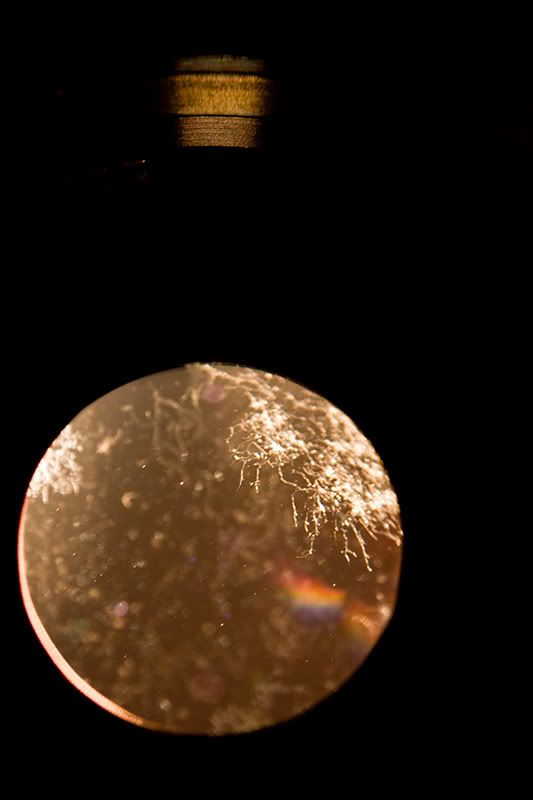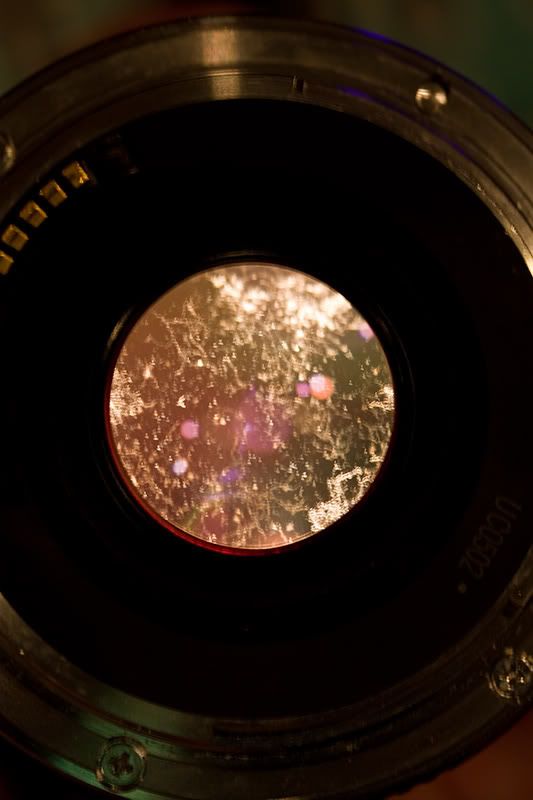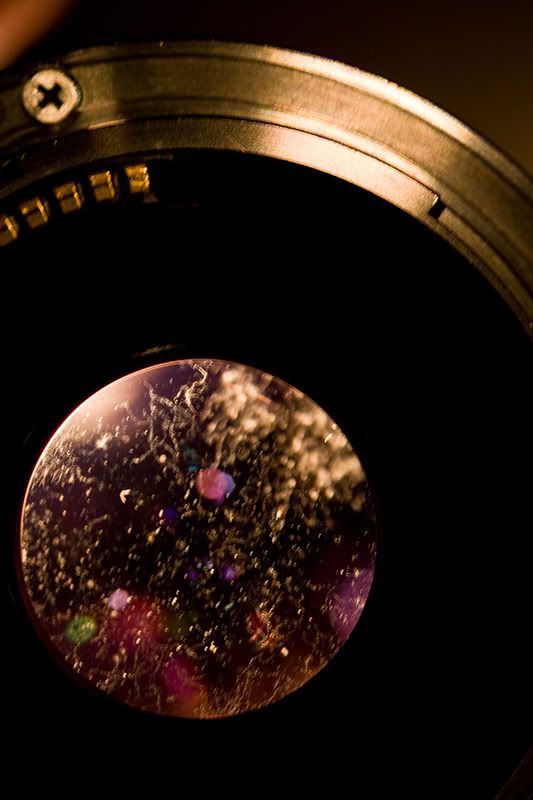Good morning AP world
Last month I bought a Canon EF 50 f/1.8 Mark I lens on eBay, the earlier version with a metal mount and distance window; some of you may recall an earlier thread (see here).
Whilst the pictures in the eBay advert were terrible (hence it was always a bit of a gamble), when the lens first arrived I was chuffed as externally it looked perfect. However, as I got to use the lens I was a bit disappointed with the pictures: they lacked a bit of contrast and the sharpness wasn't as crisp as I'd been expecting from a prime lens, even a cheap one (certainly they weren't as good as my 60mm macro lens or 24-105L).
Then, about a month after I first got it, I noticed something strange when changing lenses one day. I shone a torch through the lens and immediately saw the tell-tale spider's web of fungus infestation - linked below are four pictures which show it clearly. Once seen, never forgotten. I haven't seen too many good pictures of lens fungus before, and it took a lot of experimenting to get the captures below. Notice that, depending on how deeply into the lens elements I focus when taking the picture (eg pictures 1&2 versus pictures 3&4), the visible shape of the fungus changes; this clearly suggests the fungus is on several different layers/depths.
Anyway, I've reported the transaction to eBay who have in turn forwarded it to Paypal. Paypal requires that the buyer and seller communicate to try to resolve the issue, but the seller just wasn't interested, claiming that the lens didn't have any fungus when he sold it. So, the claim has been escalated to Paypal for dispute resolution. I am actually quite interested to see how well Paypal works in this situation, ie whether the buyer protection that they advertise so strongly really comes through. Ultimately we're only talking $150 here, so for me its more the principle of the thing. The eBay description for the item showed a question from another interested bidder which specifically asked if the lens had fungus, which the seller answered 'no the lens is perfect'. So, I think I have a pretty strong case that the product didn't match the advertised description.
My only concern is the buyer claiming that the fungus may have appeared in the 4-5 weeks since I bought it (you have 45 days to report an item to eBay, so well within that). The fungus looks well advanced to me, so I figure it might have taken many months or even years for it to progress to the current level of infection. Certainly, my other lenses have no such fungus and they have been stored in the same conditions. I'm thinking that, as part of providing evidence for my claim, I might be required to provide some sort of expert opinion from a photographic expert or even a camera shop who state that, in their opinion, the fungus would have taken longer than 5 weeks to develop to the current state. Has anyone obtained this kind of expert opinion before? Or, even better, is there anyone amongst you suitably qualified to give this kind of opinion based on the photos alone? Any other advice you might have about the Paypal claims process would be gratefully received.
The whole process has taught me quite a few learnings, which I thought I'd share with you:
- Always pay with Paypal (rather than direct bank transfer or COD), it gives you the best chance of recovering something if the transaction goes pear-shaped
- Always ask an eBay seller the explicit question "does it have any fungus" (as well as is it mechanically sound, any scratches etc). If the seller answers that its clear, then you have much stronger grounds for claiming on Paypal if the lens does turn out to have fungus
- Always check for fungus immediately when you buy a lens on eBay, just shine a torch through it
- I did quite a lot of web-research on fungus, some of which is conflicting. I think there's a lot of myths out there. From the research I did, based on the most reliable and technical-looking sources, I concluded the following about fungus:
- Fungus spores are everywhere, but they are not a problem providing humidity is below ~70%
- Where humidity is above 70% for a period greater than 24 hours straight, there is a risk of fungus developing
- If you break the 24 hour cycle of >70% humidity for a period of time, then fungus won't have started to grow and you have effectively reset the clock back to 0 hours, ie another 24 hours straight would be required for it to start to grow
- As such, having had one lens with fungus near your other equipment is not likely to have contaminated that equipment unless humidity has been high (thank god)
- keeping lenses in a sealed box or case with a silica satchel might seem like a good idea, but unless you really know what you're doing, you could be creating conditions that the spores enjoy.
- don't keep lenses in leather cases, they are particularly bad for promoting fungus growth
- synthetic bags are best for storing your equipment, or store kit out of its bag altogether
- most airconditioners keep room humidity pretty low. So the best bet for protecting your kit is to always keep it in a room that is air-conditioned regularly, in a part of the room that is relatively open (ie not a cupboard!), so the 24 hr streak is being broken daily
- I've read that you can kill fungus by leaving your lens in direct sunlight, but this just stops the progress. It won't remove fungus that's already there and etched into the glass. I'd also be concerned whether this might damage the lens.
In the short time I used the 50mm I also learned that it's focal distance is too close to my 60mm macro, so I'm going to be looking for a 30mm f/1.4 Siggy or a 28mm or 35mm Canon to give me a 'standard' lens view on a cropped sensor.
Anway, I hope the above is of some interest and use to you, it sure took a while for my two fingers to type out!I'll report back on how this turns out, in due course.
Have a fungal-free festive season!
Tricky







 Thanks useful information:
Thanks useful information: 












 Reply With Quote
Reply With Quote Add To Bookmarks
Add To Bookmarks


